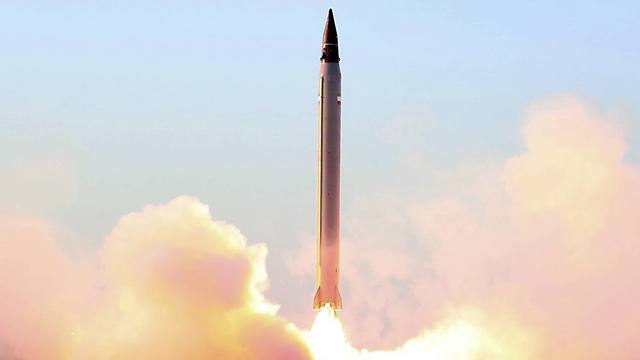
North Korea on Sunday launched another missile, its ninth this year, in its latest show of defiance to the international community.
Despite repeated condemnations and warnings of additional sanctions, Kim Jong Un’s regime has been pressing ahead at a relentless pace to develop an intercontinental ballistic missile (ICBM), which would be capable of reaching the mainland United States.
Although analysts say the regime has several key technologies to master before it can deliver a nuclear-tipped missile to a target, they also point out that it inches closes to its goal with every test.
The latest launch was of a medium-range ballistic missile, fired from a site at Pukchang, north of Pyongyang, at 4:29 p.m. local time, according to U.S. Pacific Command and South Korea’s joint chiefs of staff.
It flew for about 310 miles, landing in the sea between the Korean Peninsula and Japan, they said.
“We are working with our interagency partners on a more detailed assessment,” a Pacific Command spokesman said. “We continue to monitor North Korea’s actions closely.”
But analysts said it appeared to be another launch of the missile fired in February – the first after President Donald Trump took office. That was a Pukguksong-2 (or Polaris-2), a land-based version of North Korea’s submarine-launched missile.
White House officials traveling with Trump in Saudi Arabia said they were aware of the launch. “This system, last tested in February, has a shorter range than the missiles launched in North Korea’s three most recent tests,” an official told reporters.
In Tokyo, Japanese Prime Minister Shinzo Abe said North Korea’s repeated missile launches “trample on the efforts by the international community” to find a peaceful solution to the nuclear problem, the Kyodo news agency reported.
South Korean President Moon Jae-in convened a national security council meeting to discuss the latest launch.
The Pukguksong-2 launched in February also flew about 310 miles and appeared to be powered by solid fuel, which allows for immediate firing, rather than the more laborious process needed to prepare older-style liquid-fueled missiles for launch. North Korea can roll a solid-fuel missile out of a tunnel or hangar and launch it before satellites can track it.
John Schilling, an aerospace engineer and rocket specialist, estimated that the Pukguksong-2 could be launched on five minutes’ notice, compared with 30 to 60 minutes for older missile types.
“All of these factors would make it much harder to find and preemptively destroy the Pukguksong-2,” Schilling wrote in a note for 38 North, a website dedicated to North Korea, after the February launch.
“North Korea’s engineers presumably learned a great deal from this test, which appears to have been basically successful,” Schilling wrote then. “We do not know how much more they need to learn to be confident that the new missile will function reliably in combat.”
This latest missile launch came just a week after the North Korean government fired a new kind of ballistic missile, apparently a smaller version of one of its ICBM prototypes, that flew 435 miles.
The North Korean leader called it a “perfect weapon system,” according to state media reports showing a happy Kim at the launch site, that was able to carry “a large-size heavy nuclear warhead.”
North Korea has a history of making exaggerated claims, and it is not clear whether it can do all the things it says it can. Although it has published photos of what it says are miniaturized nuclear weapons and shown off increasingly large missiles and canisters at military parades, its capabilities have not been proven.
But Robert Litwak, director of international security studies at the Woodrow Wilson International Center for Scholars, warned against getting bogged down in “widget analysis” when North Korea’s bigger-picture goal was increasingly obvious.
Instead, the Trump administration and the international community should be trying to stop North Korea from making further progress, he said.
“In the absence of serious diplomacy to constrain their testing problem, sometime in the next couple of years they will have mastered the technology needed to hit the homeland,” Litwak said. “There is a window for serious diplomacy.”
(c) 2017, The Washington Post · Anna Fifield
{Matzav}











